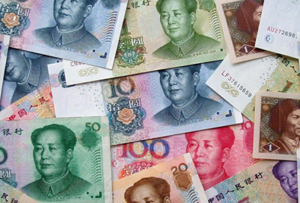Yet it can be enormously clarifying. The current-account balance is a just a net figure computed from a few selected entries in the balance of payments, basically net exports plus net factor income from abroad. Likewise the capital-account balance, the net increase in domestic claims on foreign residents less the net increase in foreign claims on domestic residents. But
which numbers get netted out is a choice, a choice that should be made according to the problem at hand. Making that choice wisely, I think, could cast some light on issues that remain obscure.
Take first the issue of U.S.–China bilateral flows of trade and capital. The net flows can be described easily: China runs an export surplus, and its central bank, wishing to prevent appreciation, absorbs the resulting net capital flows. This scale of this absorption is determined by targeting the USD/CNY exchange rate, though China is accumulating assets in other currencies as well.
Debate in the U.S. about this state of affairs has centered on the exchange rate, but the case can be made more clearly in the language of balance of payments. Underlying the claim that China is holding down the value of its currency is a view on what payments imbalances are sustainable. The U.S.–China trade imbalance, the argument goes, is unsustainable because it depresses demand for U.S. output and thus U.S. employment. The imbalance will have to narrow because low employment will not be tolerated forever. The capital-account imbalance is unsustainable, in this view, because accumulated capital flows will one day have to be reversed, meaning that some consumption will have to be foregone.
This version of the argument in considerably clearer. On the trade side, in my view, it is probably right that demand for U.S. output is depressed. On the capital side I am less convinced. It is a commonplace to call China the U.S.’s banker, thinking of U.S. debt as borrowing. But this has it backwards: China holds dollar assets for their liquidity (foregoing the higher yields it could earn elsewhere). It is the U.S. that is the banker, and China the depositor. Make no mistake, the sustainability of this situation could still be questioned. But the issue is how big a bank the U.S. wishes to be, and how much of its assets China wishes to keep in liquid form, not how the U.S. is going to pay China back. The balance-of-payments perspective makes this much clearer.
The eurozone crisis can also be naturally framed in terms of payments imbalances, in this case among member nations. Some observers have looked to intra-eurozone current-account imbalances, but in fact these do not tell us much. If you want to look at a single net figure, a better bet is to look at flows of money, whether they arise from current- or from capital-account transactions. Facilitating such flows is the essential function of the banking system, and their interruption, actual or anticipated, is the essential problem of a liquidity crisis.
Enabling money payments is the job of the private banking system, and guaranteeing that private system is the job of the public banking system, the Eurosystem in this case. Imbalances of money payments, if they cannot be resolved elsewhere, end up as accumulated imbalances in the payment system. This is the reason for our attention on this blog to TARGET2 balances. Commentators elsewhere, and private correspondents, argue that the payment system operates mechanically, and that the imbalances therefore have no economic importance. When the system is operating normally, I agree. When the system is close to the brink, it is precisely this mechanical operation that comes under question.
We should move from discussions of the current account and the capital account to discussions of gross flows, but this comes at a cost of additional complexity. The language of the balance of payments can be a guide




